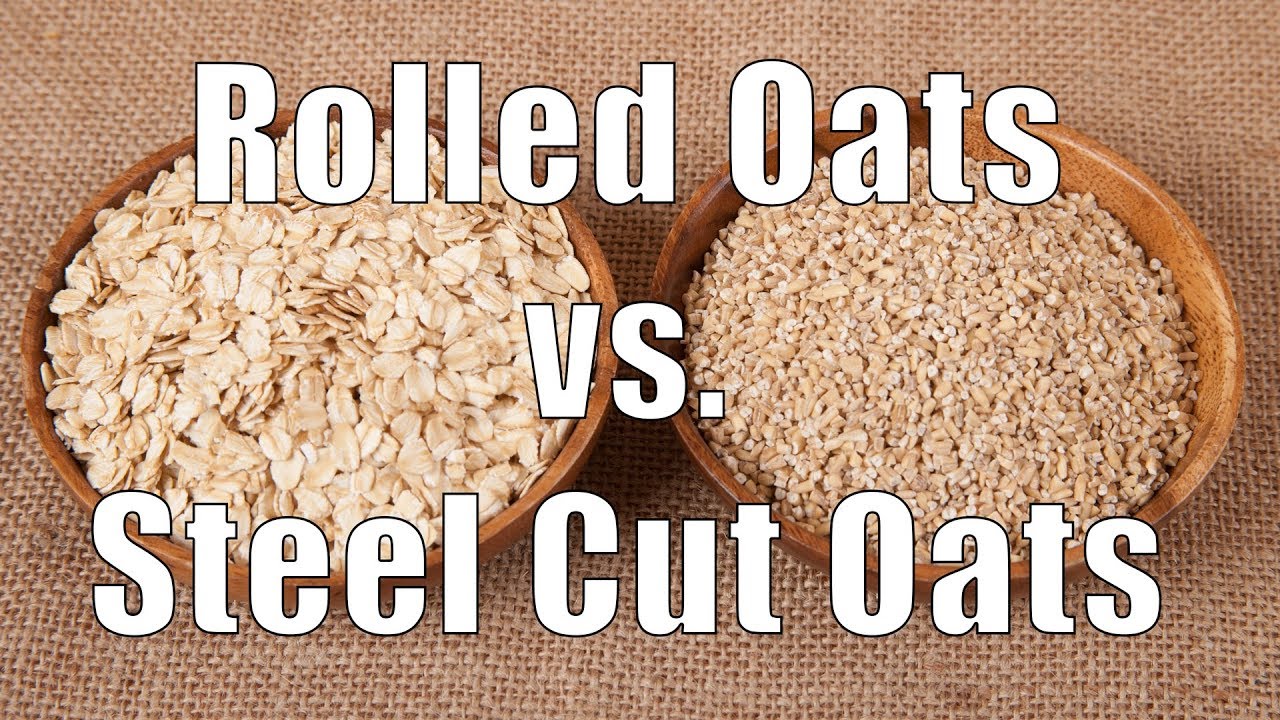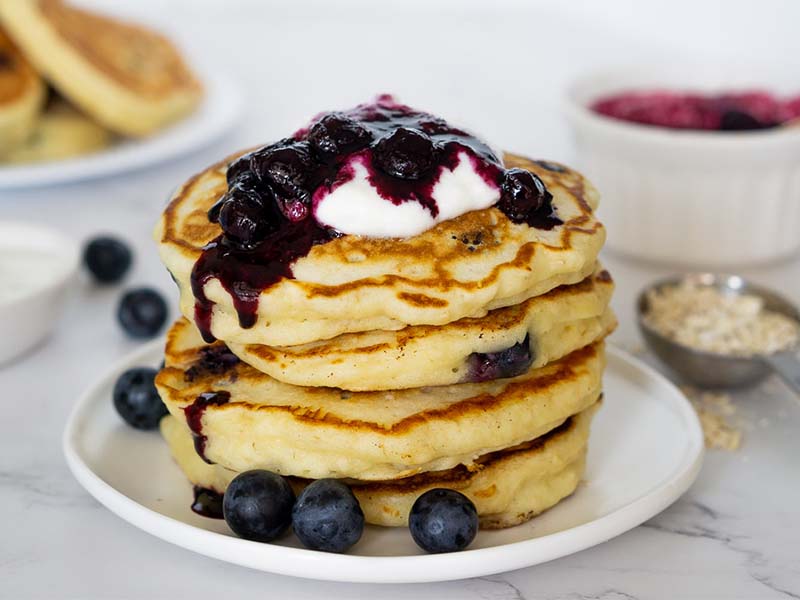Oats have been a breakfast staple for centuries, and honestly, they’ve earned their spot. They’re nutritious, filling, and ridiculously versatile. But if you’ve ever stood in the cereal aisle staring at the different types, wondering if you should go for rolled oats or steel-cut, you’re not alone. They’re made from the same grain, yet they look, taste, and even cook completely differently. So which one should you pick? Let’s dig in.
Rolled Oats vs Steel Cut Oats: Which Type of Oats is More Nutritious?
When it comes to nutrition, both types of oats are solid choices—but steel-cut oats do have a slight edge in a couple of areas.
| Rolled Oats | Steel-cut Oats | |
|---|---|---|
| Calories | 212 | 208 |
| Carbs | 39g | 37g |
| Protein | 7g | 9g |
| Fat | 4g | 4g |
| Fiber | 5g | 6g |
| Sugar | 1g | 0g |
The nutritional index of rolled oats and steel cut oats is very low
Steel cut oats contain more fiber than rolled oats
If you’re looking for something that keeps you full longer, steel-cut oats have a slight advantage. Since they’re less processed, they hold onto more fiber, which means they digest slower and keep you satisfied for hours. That’s great news if you hate feeling hungry an hour after breakfast. But let’s be real—rolled oats aren’t exactly slacking in the fiber department. The difference isn’t huge, and both will give your digestive system a good boost.
Steel cut oats have a lower glycemic index than rolled oats
Ever eat something for breakfast and feel like you need a nap an hour later? That’s usually thanks to a blood sugar spike, and it’s where steel-cut oats shine. Because they break down more slowly, they give you a steady release of energy instead of a quick burst followed by a crash. Rolled oats, while still a solid choice, digest a bit faster, meaning they might not keep your blood sugar as stable. If you’re watching your glucose levels, steel-cut might be the better bet.
How is the Production Process Different?
Steel cut oats
Steel-cut oats are the least processed of the bunch. The oat groats (aka the whole grains) are simply chopped into a few pieces. That’s it. No steaming, no rolling—just a clean cut. Because of that, they’re dense and chewy, which is great if you like a little texture in your breakfast. But fair warning: they take their sweet time cooking. We’re talking about 20 to 30 minutes on the stove unless you soak them overnight.
Rolled oats
Rolled oats, on the other hand, go through a bit of a transformation. First, the oat groats get steamed to soften them up, then they’re flattened with big rollers. This extra processing makes them cook way faster, which is why they’re the go-to choice for busy mornings. They also absorb liquid like a sponge, which means they turn into a creamy, comforting bowl of oatmeal in just 5 to 10 minutes. If convenience is your thing, rolled oats win.

At the end of the day, both are great. If you love a chewy, hearty texture and don’t mind the longer cooking time, steel-cut oats are worth it. But if you’re more of a “breakfast in five minutes” kind of person, rolled oats are the way to go.
Rolled oats also have the advantage when it comes to versatility. You can throw them into cookies, muffins, pancakes, or even smoothies. Steel-cut oats? Not so much. They’re mostly eaten as a hot cereal, and that’s about it. So if you’re all about variety, rolled oats might be the better option.
You should avoid oats that are high in sugar
Here’s where people mess up. Oats, in their pure form, are one of the healthiest things you can eat. But the second you grab those flavored packets—apple cinnamon, maple brown sugar—you’re basically eating a bowl of dessert. Some instant oat packets pack more than four teaspoons of sugar per serving. That’s wild.
If you actually want a healthy breakfast, go for plain oats and add your own toppings. A handful of berries, some nuts, maybe a drizzle of honey—boom, delicious and still good for you.
The Benefits of Oats
Oats aren’t just good—they’re a powerhouse. They’re naturally gluten-free (though if you have celiac disease, you’ll want to grab certified gluten-free ones to avoid cross-contamination). They’re packed with antioxidants and beta-glucan, a type of fiber that helps lower cholesterol and keep your heart happy.
They’re also a game-changer for weight management and blood sugar control. The beta-glucans in oats slow digestion, which means fewer hunger pangs and fewer sugar crashes. Studies have even found that eating oats daily can help lower blood sugar levels and support weight loss. So yeah, oats are kind of a big deal.

If you’re tired of the same old bowl of oatmeal, try switching things up with oat pancakes and strawberry sauce. It’s easy, delicious, and way more exciting than just eating oats with a spoon.
To make them, grab 100 grams of oats, 200 grams of flour, 2 teaspoons of baking powder, 320 milliliters of fresh milk, sugar, salt, 2 eggs, and 200 grams of strawberries or raspberries.
Start by cooking the oats in 500 milliliters of water. Bring them to a boil, then let them simmer for about 3 to 5 minutes until they soften. Let them cool.
In one bowl, mix the flour, baking powder, two tablespoons of sugar, and a pinch of salt. In another, whisk the milk and eggs, then stir in the cooled oats. Slowly add the dry ingredients, stirring until smooth.
Heat a pan, melt a little butter, and cook the pancakes until golden brown on both sides.
For the strawberry sauce, cook the berries with 2 to 3 tablespoons of water and 50 grams of sugar over low heat until they turn into a thick, jammy mixture. Let it cool, then pour it over the pancakes. Breakfast just got a serious upgrade.
Cool the strawberry sauce mixture and serve with pancakes.
Final Words
So, which is better: rolled oats or steel-cut oats? The truth is, both are great—it just depends on what you’re looking for. If you want a slow-digesting, fiber-packed breakfast, go for steel-cut oats. If you need something quick and versatile, rolled oats have your back. Either way, you’re making a solid choice. The real winner? The one that actually makes it into your breakfast bowl.
